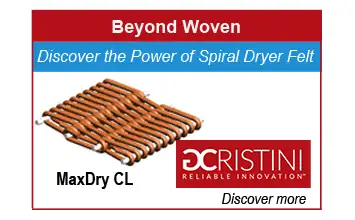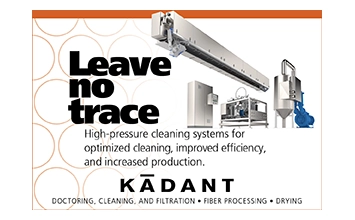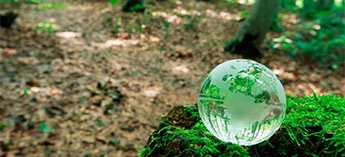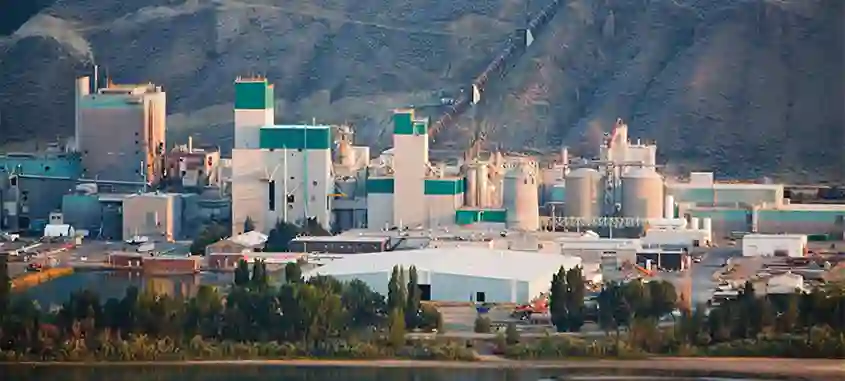Learn about testing cellulose nanocrystal biodegradability under aerobic, anaerobic, and marine conditions. CelluRods® cellulose nanocrystals are biodegradable and safe for the environment while retaining full performance during their service life.
Cellulose nanocrystals come from nature and return to nature
At CelluForce, sustainability is at the core of everything we do. As a pioneer in the development and production of cellulose nanocrystals (CNCs), we are proud to offer a material that is not only derived from renewable resources but also demonstrates excellent environmental compatibility, including confirmed biodegradability.
We’re pleased to share that CelluForce’s CNCs have successfully passed the internationally recognized biodegradability requirements of OECD Tests Nos. 301B, 306, and 311.
Why is biodegradability important?
When they reach the end of their usable life, many products, even if they are recyclable, are discarded and end up in landfill and beyond.
Non-biodegradable materials persist in the environment for long periods of time, leading to pollution and environmental and ecological damage.
Biodegradable materials, on the other hand, can decompose naturally by biological processes such as the action of bacteria and fungi. The decomposition products are simpler, non-toxic compounds that do not accumulate in landfills and ecosystems; they are reabsorbed by the environment.
Biodegradability of cellulose nanocrystals
Cellulose is a fundamental component of the cell walls of most plants and trees, making it one of the most abundant biopolymers on Earth.
Because of its widespread presence in nature, many microorganisms such as bacteria and fungi have evolved the ability to digest cellulose and use it as a food (energy) source.
Owing to their high degree of crystallinity and thus lower chemical accessibility (e.g., to digestive enzymes), CNCs may be harder for microorganisms to degrade despite being made of the same cellulose chains.
Testing and classifying materials’ biodegradability
Testing is needed to determine how materials interact with and break down in different types of environments. If a material is tested and classified as biodegradable it can be expected to break down naturally in its ultimate disposal setting.
The OECD biodegradability tests are a series of internationally recognized protocols developed by the Organisation for Economic Co-operation and Development (OECD) to evaluate how readily a substance breaks down in various environmental conditions.
These tests simulate real-world scenarios to assess whether a material will naturally decompose through microbial activity. The results help manufacturers, regulators, and consumers understand whether a material will break down safely after use.
The OECD biodegradability tests provide scientific evidence of a material’s environmental impact.
A third-party independent laboratory was commissioned by CelluForce to test the OECD biodegradability of CelluRods® in freshwater, anaerobic, and marine environments.
CNCs readily biodegrade in aerobic freshwater conditions

OECD Test No. 301B: Ready Biodegradability determines how rapidly and effectively a material degrades in water in the presence of oxygen. This test assesses how CNCs might biodegrade in rivers, lakes, and other bodies of freshwater, as well as in sewage systems or treated sewage effluent.
How the test works: A suspension of CelluRods® in an aqueous medium is inoculated with bacteria and incubated under aerobic conditions for 28 days. The cellulose nanocrystals are the sole source of carbon for the bacteria to digest, and the carbon dioxide (CO2) produced by the bacteria is measured to follow the degradation of the CNCs.
Carbon dioxide generation is compared to the maximum theoretical value for CO2 production (ThCO2) for the sample. For a material to be considered readily biodegradable, at least 60% of the ThCO2 production value must be reached, and that within a 10-day window, during the 28-day test period.
CelluRods® achieved a biodegradability of 86% ThCO2 production within the test period, significantly exceeding the requirements! CelluRods® cellulose nanocrystals are readily biodegradable and do not present a risk if they are released into our waterways.
CNCs biodegrade in anaerobic conditions

OECD Test No. 311: Anaerobic Biodegradability of Organic Compounds in Digested Sludge simulates environments where oxygen is absent, such as in anaerobic digesters, wastewater treatment facilities, natural sediments, or even landfill conditions. This test assesses how CNCs might biodegrade in these environments.
How the test works: CelluRods® are incubated for 60 days with digested sludge (a mixture of the settled phases of sewage and activated sludge) from a municipal anaerobic digester. This contains anaerobic fermentative and methanogenic bacteria producing carbon dioxide (CO2) and methane (CH4).
The total amount of carbon (CO2 plus CH4) produced by the biodegradation is measured and compared to the ThCO2 value. For a material to be considered biodegradable under anaerobic conditions, at least 60% of the ThCO2 production value must be reached within the 60-day test period.
CelluRods® achieved a biodegradability of 94% ThCO2 production within the test period, greatly surpassing the requirements! In fact, the minimum requirement of 60% ThCO2 was achieved in under 10 days, highlighting that cellulose nanocrystals biodegrade rapidly under anaerobic conditions.
CNCs biodegrade in seawater

Many industrial wastewaters flow into the sea before any harmful chemicals or materials have time to fully break down. To help protect marine ecosystems, biodegradability tests in seawater have been developed. OECD Test No. 306: Biodegradability in Seawater uses natural seawater as the aqueous phase and the source of microorganisms to provide environmentally relevant testing conditions. CelluRods® cellulose nanocrystals have been known to be marine biodegradable since 2020.
How the test works: CelluRods® are incubated under agitation for 60 days with seawater (containing bacteria cultured from seawater). The total chemical oxygen demand (COD) is measured and compared to the theoretical oxygen demand (ThO2).
For a material to be considered biodegradable under marine conditions, at least 60% of the ThO2 demand must be reached within the 60-day test period.
CelluRods® achieved a COD of 62.5% ThO2 by day 28 of testing, exceeding the requirement to be designated as marine biodegradable. Backed by testing, CNCs are safe for marine ecosystems.
Sustainable performance with biodegradable CelluForce CNCs
OECD test results affirm that CelluRods® CNCs break down under a variety of environmental conditions, offering a natural alternative to synthetic and non-degradable additives – minimizing pollution, reducing long-term waste, and ensuring compatibility with circular economy principles.
These successful results highlight CelluForce’s ongoing commitment to sustainability and the development of environmentally friendly products.
In an era where environmental responsibility is more important than ever, CelluRods® provide a forward-looking solution for companies seeking to meet sustainability targets and reduce environmental liabilities without compromising performance.
CNCs: sustainability without sacrificing quality
Biodegradable doesn’t mean fragile! Cellulose nanocrystals are remarkably strong and durable in demanding applications, including oil recovery and barrier technologies, despite being fully biodegradable.
Once incorporated into a product, CNCs remain stable and maintain their performance throughout its use. Their biodegradation only begins in suitable environments, such as industrial composting facilities or landfills, once the product reaches the end of its lifecycle.
CNCs’ dual profile of robust performance and controlled biodegradation supports their integration into sustainable materials and circular economy frameworks.
How CelluForce supports the circular economy with biodegradable CelluRods®
Sourced exclusively from PEFC-certified wood, CelluRods® CNCs are made from the planet’s most abundant biopolymer – and they naturally break down after use! Whether they are used in cosmetics, packaging, construction, or advanced composites, CNCs support greener product development across industries.
Innovators and manufacturers alike can “drop in” a bio-based, biodegradable nanomaterial into existing processes, knowing it aligns with the growing demand for circularity and green innovation.
Looking to create sustainable, high-performing products with low environmental impact? CelluRods® cellulose nanocrystals are ready to help you reach your goals. Contact us today to request a sample or to discuss your product development needs.
Innovate sustainably with CelluRods® — explore how cellulose nanocrystals can power your next eco-innovation and order a free CelluRods® sample now!

























































